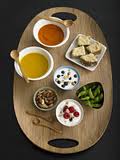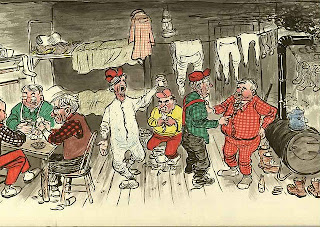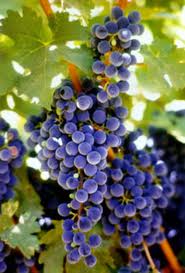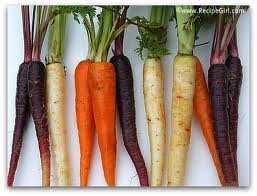Well, its that time of year again: the time to reflect on the past 365 days and decide what in your life needs updating and changing; then resolving to do better for the next 365 days. But doesn't it seem as though every year most of us make the same resolution? I resolve to lose weight! I resolve to eat better! I resolve to spend less money! How about this New Year, you revolutionize that resolution! Think up different resolutions that will actually be something you can achieve and maybe even find they can enhance your every day life. This year I am making a resolution revolution and going outside the box!
Perfection Isn't Reality
 As some of you may know, I am a bit of a perfectionist. I straighten my hair about 45 times per day, all plated food I prepare must contain the entire rainbow, people that don't use their blinker while driving make me crazy, and God help you if your around me and I find I have received a grade that is anything less than an A. My name is Jackie and I am a perfectionist. I hope you all know how difficult that was for me to admit...as a perfectionist, I am now admitting I am less than perfect.
As some of you may know, I am a bit of a perfectionist. I straighten my hair about 45 times per day, all plated food I prepare must contain the entire rainbow, people that don't use their blinker while driving make me crazy, and God help you if your around me and I find I have received a grade that is anything less than an A. My name is Jackie and I am a perfectionist. I hope you all know how difficult that was for me to admit...as a perfectionist, I am now admitting I am less than perfect.But why take so much time stressing over being less than perfect? I will never get there, no one can. One of my best friends in my class, Mariana, said to me one day, "Why does it matter so much to get a grade of an A rather than an AB? Will you get a better job? Will you get paid more money? No. Its just not worth killing yourself over being perfect in school." When she first said that I scoffed in my mind. I will know if I get a less-than-perfect grade!! It will be on my transcript. It will ruin my 4.0 GPA at Mount Mary. But then I got to thinking: if I didn't kill myself to be perfect, think about how much more time I would have. Think about how much less stress I would be under. And most importantly, think about what a much better mood I would be in. So next year, I resolve to understand that perfection isn't reality and not worry so much about being perfect...at least, I'll try.
 Quality Over Quantity
Quality Over QuantityThis last year was a big wake-up call to me. My fiance began his career as an attorney and because of that fact, he worked quite a bit. Most weeks, he would work 7 days a week and bring work home with him. I'm not going to lie, it was a big adjustment for me. I am so proud of him and what he has accomplished in his career and I have tried so hard to adjust to his lifestyle and the responsibility that he has to his law firm. That being said, I still got a bit jealous that on Saturday mornings, it seemed that he would rather hang out in his office than with me.
When I stop to think about my feelings on this I came to a conclusion: I would get upset that he was spending so much time working. But so what? What else would we be doing if he wasn't working so much? Cleaning? Watching TV? Reading? Maybe I should be more concerned with using the time we do have together and doing something meaningful and fun. Make a date night once a week. Use that time to visit family. Or use it for something else altogether, that we both love to do and make great memories. Next year, I resolve to remember that quality time is favored over just quantity time.
Learn To Have Fun By Yourself
Over the course of the last year, I think I have covered more miles than I have the rest of my life combined. Driving miles, that is. I was finishing my Dietetics degree at Mount Mary College in Milwaukee, living with my grandma in Port Washington during the week, and commuting back to Madison on the weekends. I easily drove about 250 miles each week. And that doesn't even count when I would have to travel to shadowing opportunities through my classes that, of course, where about an hour and a half out of my way. That being said, I spent a lot of time in the car by myself.

When I transferred to Mount Mary and began the long commutes every day, I hated it. Long spans of being in the car, left with my radio and my thoughts. I would get bored so easily and resent the fact that I was sacrificing my time to see Tyler and my family. The same songs would play over and over again on the radio. I would see the same sucky drivers every morning (note: Milwaukee drivers are out to kill every driver on the road, except themselves). But about halfway through the year, I began to notice a change in myself: I actually started to look forward to my time alone in the car. It was almost therapeutic in a way. During the middle of the semesters I found myself so stressed, so having this time to just be silent and reflect and breathe really helped me. If I needed silence I would turn the radio off, if I needed cheering up I would give myself a pep talk, if I needed to study I would go through study guides. I learned to have fun with myself, and honestly, I learned a lot more about myself. Next year, I resolve to continue learning about myself and having fun by myself.
Its the time of year to start new and wipe the slate clean. This year, do something a little different and make a resolution revolution!!
Happy New Year!!
















































